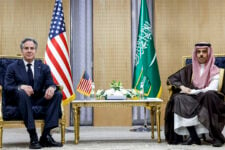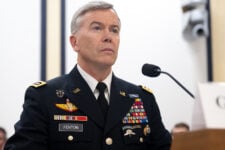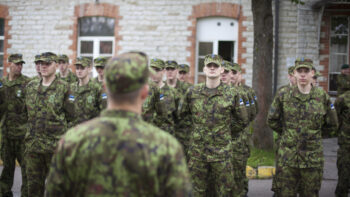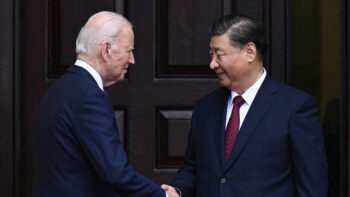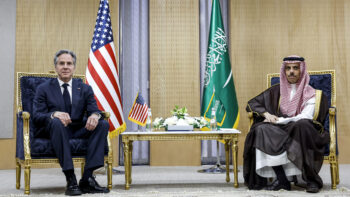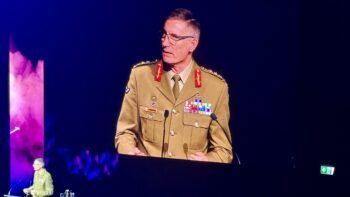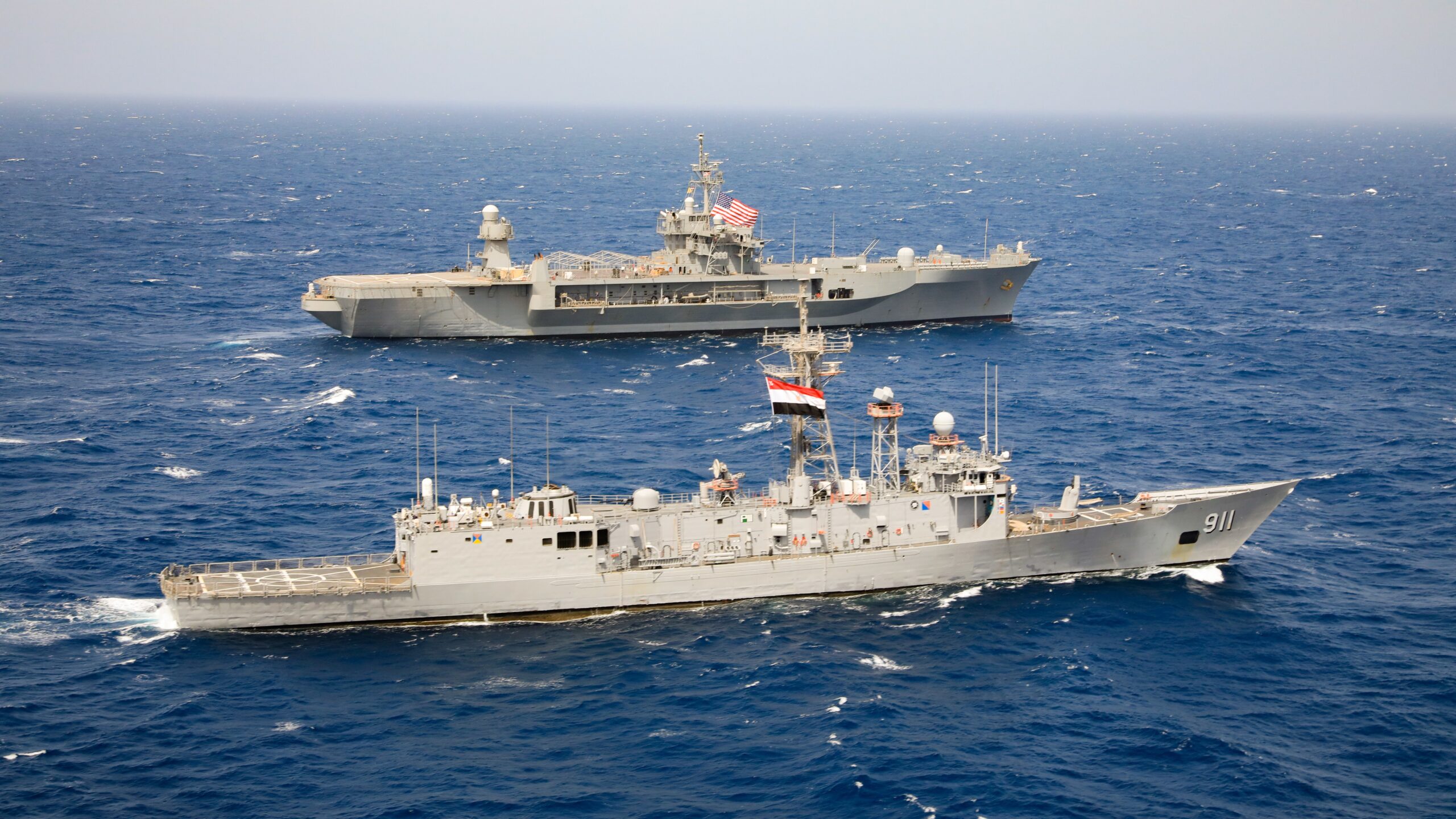
220420-A-AI379-7272 RED SEA (April 20, 2022) Egyptian Navy frigate ENS Alexandria (F911) and amphibious command ship USS Mount Whitney (LCC 20) operate in the Red Sea in support of the newly established Combined Task Force 153, April 20. CTF 153 focuses on maritime security and capacity building in the Red Sea, Bab al-Mandeb and Gulf of Aden. (U.S. Army photo by Cpl. DeAndre Dawkins)
BEIRUT — The US Navy today announced the launch of Task Force CTF 154, a new effort dedicated to training regional navies in the Middle East in order to “improve operational capabilities to enhance maritime security” in the region, according to a statement issued by the US Naval Forces Central Command.
CTF 154 will be the fifth regional task force to operate under the aegis of the US-led multinational partnership known as Combined Maritime Forces (CMF). Capt. Oliver Herion, is CTF 154’s first commander, and the US will remain in charge until a new nation assumes command in the upcoming fall.
“Establishing CTF 154 demonstrates our deep commitment to strengthening and expanding partnerships through new training opportunities that will enhance regional maritime security” said Vice Adm. Brad Cooper, commander of US Naval Forces Central Command, US 5th Fleet and CMF, in a statement.
“We stood up this new task force to provide more opportunities for partners to train together. CTF 154 will lead multinational maritime training events throughout the Middle East to enable more nations and personnel to participate without ships or aircraft, particularly during exercises ashore,” Cmdr. Tim Hawkins, spokesman for the U.S. Naval Forces Central Command, US 5th Fleet and Combined Maritime Forces, told Breaking Defense.
RELATED: As US shifts its gaze, can anyone keep an eye on Iran in the Gulf?
He added that greater collaboration is important because maritime forces are always at “our best when we train, operate and closely work together.”
CTF-154 training events will be held throughout the year based on partner requests, according to Hawkins. The first drill, known as Compass Rose, is taking place in Bahrain with more than 50 regional and international participants.
Asked about the number of drills planned for this year, Hawkins didn’t specify but assured that the task force will frequently organize training events around five core areas: maritime awareness, maritime law, maritime interdiction, maritime rescue and assistance, and leadership development.
“This means events will often include lessons on artificial intelligence and unmanned systems integration for maritime awareness, courses on the legal basis for operating at sea, and training on small boat operations and vessel boarding procedures for maritime interdiction. Partners will also share best practices for rendering assistance at sea during courses on maritime search and rescue, and hold officer mentorship sessions for leadership development. Each training opportunity will be tailored to meet partner requests ranging from basic to advanced levels,” Hawkins added.
CTF 154 may well end up having a broader regional role than other CMF four task forces dedicated to limited regions. Those are CTF 150 focusing on the Gulf of Oman and Indian Ocean; CTF 151, which leads regional counter-piracy efforts; CTF 152, dedicated to maritime security in the Arabian Gulf; and CTF 153 in the Red Sea.
“CTF 154 looks to have a role across the region rather than be focused on the Red Sea, which is the role of CTF 153. This looks like an effort to reach out more broadly to help build up local skills to be able to collaborate more effectively and take on more of a role in a range of maritime security missions,” Nick Childs, senior fellow for naval forces and maritime security at IISS, told Breaking Defense.
Childs added that this task force could enable local forces to take on more of a share of missions like maritime interdiction, particularly as the US presence changes and some assets are drawn elsewhere. “But it will likely remain under an overall US leadership umbrella to ensure that the co-operation is sustained,” he said.
Ryan Bohl, a senior Middle East and North Africa analyst at the RANE Network, also noted the need for the US to rely on its regional partnerships as it tries to shift towards Europe and the Indo-Pacific.
“This task force enables the United States to have less direct focus on this naval harassment campaign by building up the skills of local navies that will offset the security impact of a potential shift of US forces to Asia,” Bohl said.
He highlighted that the overall strategic backdrop of the establishment of this new task force takes place on a region that is still beset with Iranian naval harassment.
“Despite warming relations between Gulf Arab states and Iran, Iran’s navy and revolutionary guard continue to seize tankers and harass maritime traffic throughout the region. It’s in the United States interest to increase maritime skills on this backdrop for friendly Navy’s like Saudi Arabia, Oman, Qatar, Kuwait, the UAE and Bahrain,” Bohl concluded.
Estonia ‘seriously’ discussing sending troops to ‘rear’ jobs in Ukraine: Official
The national security advisor to the Estonian president is the latest NATO nation official to weigh into the debate over the wisdom of foreign forces in Ukraine, while a senior British officer said it’s still “not a path that the [UK] Prime Minister wants to go down.”





